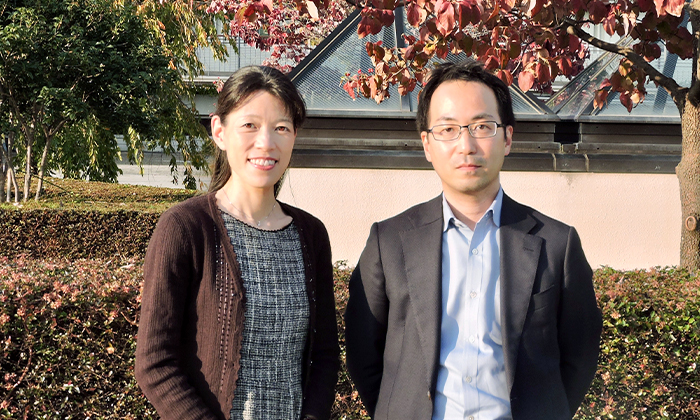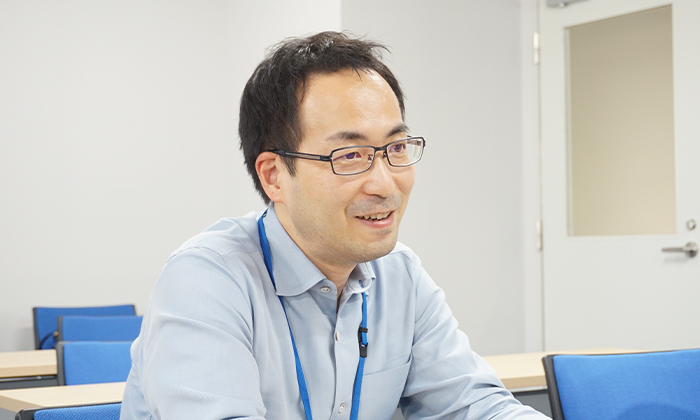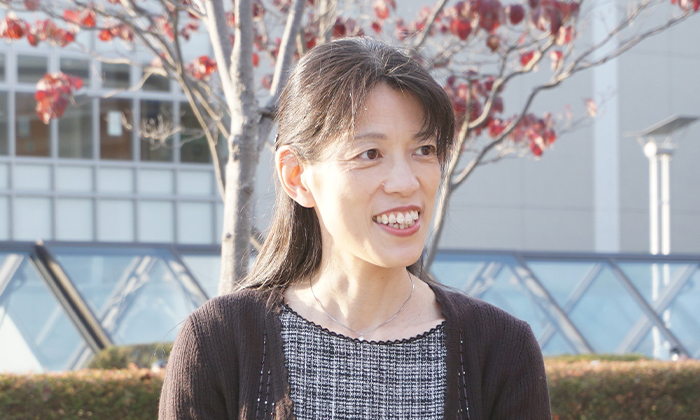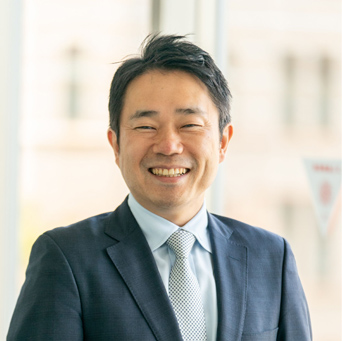Contact UsCONTACT
Please feel free to contact us if you have any questions or concerns.
Inquiry FormStories
STORIES
SERIES EMBARK

The company will use small molecule compounds developed at Kyoto University to develop new therapeutic agents for rare and intractable diseases in ophthalmology. The company anticipates not only domestic but also overseas markets, and will eventually expand its application to myocardial infarction and cerebral infarction; Kyoto Drug Discovery & Development Co., Ltd. which was founded in 2015, aims to develop such a business. The company received investment from Kyoto University Innovation Capital (Kyoto-iCAP) in June 2016. The company's constant focus is to save patients suffering from diseases, and its underlying belief is that its business is part of the treatment to save patients. We interviewed Kunihiro Musashi, a physician and CEO of KDDD, and Hanako Ikeda, a medical advisor of KDDD and a specific associate professor of Kyoto University Hospital, about the background of the start-up and future business development. (Interviewer: Hidenori Takahashi)
The company was established in May 2015. Prior to that, Professor Nagahisa Yoshimura of the Graduate School of Medicine (now Professor Emeritus) and then-Associate Professor Hanako Ikeda of the Integrated Center for Clinical Research of the School of Medicine, using a novel small molecule compound (KUS) developed by Professor Akira Kakizuka of the Graduate School of Life Sciences, Kyoto University, confirmed its medicinal effects in animal models of intractable diseases in the ophthalmologic KUS can strongly protect cells by maintaining the amount of adenosine triphosphate (ATP).
Dr. Ikeda wanted to take KUS to the level of human therapy, and in 2014, Dr. Yoshimura approached me with the idea of starting a bio-venture that would serve as the vessel to realize Dr. Ikeda's vision. As a clinician myself, it was a time when I was helping to develop several medical devices. I saw the data and fell in love with the drug because I thought its efficacy was amazing. That was my primary motivation for starting my own business. After that, I started the company with the developers of KUS.
If we deliver medical knowledge directly to patients, it is medical treatment, surgery, and therapy; if we put that knowledge on machines, it becomes medical equipment; if we use IT to disseminate information, it helps improve the standard of medical care. I believe that if both of these actions lead to saving patients, they are medical actions.
I didn't feel it was much of a hardship since I started the business from data that I originally fell in love with. Immediately after starting the business, I did not know when I would be able to secure funding for the business, so I focused on keeping fixed costs as low as possible. In the beginning, both myself and my staff were almost entirely on a hand-to-mouth basis, but with the wisdom of a lawyer familiar with startup management and the advice of an accountant, we were able to sign a patent license agreement with Kyoto University in March 2016. In June of the same year, we were able to raise funds from Kyoto-iCAP and five other venture capital firms.

In April 2009, I returned to Kyoto University from a city hospital. Before returning, when I was searching for a research theme, I had an opportunity to talk with Dr. Kakizuka, who had been involved with me as a student. It struck me that KUS could be used to treat eye diseases caused by cell death. After returning to the university, I used KUS at the cellular level, then at the animal experimental level, and this worked well. Good results were also obtained in animal experiments on models of diseases such as glaucoma and retinitis pigmentosa, which are difficult to control in their progression.
Around 2011, I began to think that it would be a waste to conduct experiments only on animals, so I approached domestic pharmaceutical companies. However, none of them agreed. Both glaucoma and retinitis pigmentosa are diseases that gradually worsen over 20 to 30 years. Since the drugs are designed to inhibit the progression of the disease, clinical trials are necessary, such as administering the drugs for two or three years, but they said that it was too risky to conduct clinical trials when they did not know whether the drugs would work.
Around the end of 2012, we decided to change our target to a disease that could be evaluated in a short period of time and decided to target central retinal artery occlusion (CRAO), which is caused by rapid cell death.
In the fall of 2013, we were able to obtain a Grant-in-Aid for Scientific Research on Intractable Diseases from the Ministry of Health, Labour and Welfare, and began non-clinical trials. Animal experiments have confirmed that it works well for CRAO. However, since CRAO is a very rapidly progressive disease, we were not at all confident that it would work in humans.
It was only after the clinical trial was over that I became convinced. From the first case to about the third case of the clinical trial started at the ophthalmology department of the affiliated hospital, the results continued to be quite good. This is because my vision improved considerably compared to the natural observation of the progress, which only resulted in a decrease in vision. I am sure that I was scared all the way to the end of the clinical trial.
In the first place, it is very difficult to administer a university-produced drug to a person for the first time at a university-affiliated hospital without a company bringing it in for clinical trials.
It was not difficult. Although we are medical school graduates, we are not trained in drug development. We don't know what process a compound has to go through before it can be administered to humans. We do not know how many safety studies are needed, how to administer a compound to humans in a clinical trial, or how much money is involved. How much money will it cost? I had to do it all by myself.
In fact, when we were conducting preclinical trials, there was a pharmaceutical company that was willing to work on commercialization of the product if good results were obtained. However, around the summer of 2014, the company changed its policy and the talks came to a halt. Just as Dr. Yoshimura and I were concerned that public funds such as the Grant-in-Aid for Scientific Research would eventually run out, we had an opportunity to speak with President Musashi.
I was one year senior to Dr. Ikeda at the university, but we had no previous contact working together. I fell in love with the research data of Dr. Ikeda and his colleagues and decided to assist in drug discovery.

One is the strength of the KUS compound. It has a breakthrough pharmacological action that does not reduce the amount of ATP in the cell, and we have numerous data on this. By combining this breakthrough pharmacological action with unmet medical needs, we can reach out to diseases that were previously untreatable.
The other is our internal structure. I myself am an ophthalmologist, and many of our members have a great deal of experience in pharmaceutical companies. Especially in the field of ophthalmology, we have a clear view of the strength of clinical impact and what we need to focus on to develop and deliver our products to patients. Furthermore, they are able to visualize in concrete terms what kind of data packages they need to present to pharmaceutical companies in order to get their drugs delivered to patients.
We are preparing global clinical trials for retinal artery occlusion, including CRAO, in Japan, the United States, and Europe. We believe that we will be able to deliver the drug as a treatment to patients around 2024 to 2025. If realized, this will be the first case in which the seeds of drug discovery born in a Japanese university-launched venture will be distributed in the global market.
The next step is to expand the application to retinal degenerative diseases such as retinitis pigmentosa, for which we hope to start Phase IIa clinical trials in 2023 or later. Beyond that, we are also looking to expand the application to acute myocardial infarction and other diseases.
In the ophthalmology field, it is expected that the final drug will be marketed by a major pharmaceutical company with strong sales capabilities. We will take on the initial development risk, which the pharmaceutical companies want to avoid, and have the pharmaceutical companies take over the development from the middle of the process. For areas other than ophthalmology, once we have confirmed the drug's efficacy, we intend to hand it over to the pharmaceutical company at an early stage.
In a relay, we are the second or third runner to take over the university's seeds, and the final anchor is a pharmaceutical company that can sell the product around the world.
Kyoto-iCAP sees ventures at various stages. Therefore, we can ask them to point out what areas are lacking. For example, they suggested that we have our own laboratory. At that point, I felt it was too early to do so, but in retrospect, I wish I had had it earlier.
We were also advised to proceed with negotiations to find a partner all at once. This is because the information will not be fresh. I intensively approached about 150 companies at domestic and international biotechnology events, and had opportunities to explain my company to 40 to 50 of them.
The first step is to try starting a business. If you fail, I think you just have to try again. Of course, it is important to know when you have failed.
To start a business, it is essential to have passion and enthusiasm. You need to have the right philosophy and seeds, and you need a system that will generate cash. For this, the knowledge of lawyers, accountants, and other professionals who can support you is indispensable.
The next step is to gather members who share the mission. By constantly sending out information yourself, you will naturally attract members. I often tell the parable of Momotaro. Momotaro is holding a banner that says "Japan's No.1. Normally, he is a funny person when people nearby see him. But from a distance, the flag is barely visible. That flag held high is highly effective. It is because people can clearly see that we are "the best in Japan. In this day and age, it is easy to disseminate information using IT. By always holding the flag high, you can make contacts from various places.
Then again, a medical professional is a must for a medical venture. I don't think it is necessary that the president = a doctor.
(Interviewed in November 2020. Affiliations, positions, etc. are as of the time of the interview)
This is one of the companies we support that has the strongest Kyoto University color. The compound, the non-clinical/clinical development data, the president, everything is made in Kyoto University, and the CFO is a legendary running back on the Kyoto University football team. The business is moving forward with teamwork while steadily updating the 1st down of development. Drug approval touchdown is near!

Nobuhiro Yagi

Kyoto Drug Discovery & Development Co., Ltd. Website
Please feel free to contact us if you have any questions or concerns.
Inquiry Form